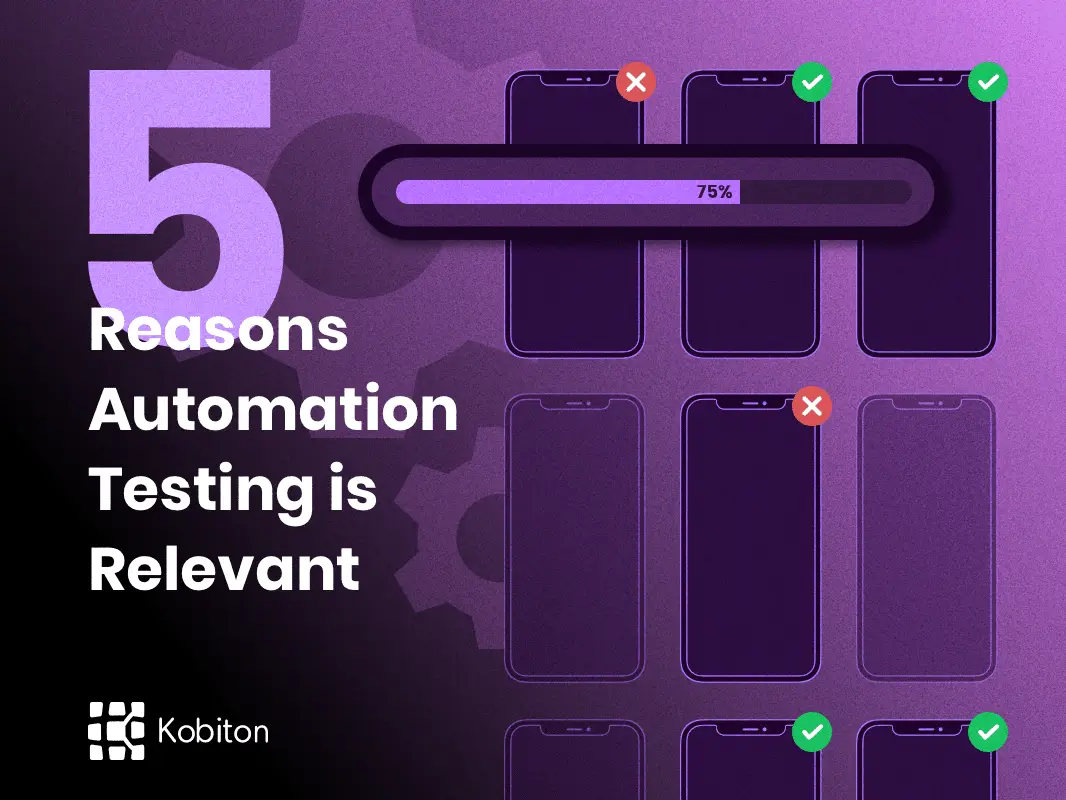
5 Reasons Automation Testing is Relevant

Adam Creamer
It’s become vogue in some circles of the mobile app community to ascribe to the belief that manual testing is somehow “obsolete”, that automated testing has driven it to the time of the dinosaurs. And yes, automation always has its place in the realm of testing, but why must it be one or the other? Manual testing still has a multitude of applications that automated testing falls short of, and for that, it should be considered across the scope of companies and mobile app development teams as a viable option when it comes time to test mobile apps.
With that said, here are five reasons why manual mobile testing is still relevant and going strong in the mobile app development industry:
The only way to have a genuine user experience is to have a user experience the testing firsthand. UX via manual mobile testing allows testers to behave as legitimate users, harnessing their instincts and background knowledge of mobile app usage to approach the functionality of an app in a true-to-life manner. All too many mobile application manual testing converts have stated how shocking it is each and every time they make the splash and have their first lightbulb moment when a user approaches an app in a way that testers would have never had the foresight to plan for. Because of this, it becomes readily apparent to manual testers which apps on the market were tested manually or with automated programming; the awkward bugs you hear about that lead to app crashes are all too often the byproduct of automated oversight that can never fully prepare for what a human is going to do when the app is in their hands.
Manual mobile testing is designed for the user to have full control of each and every test, set to their own parameters to decipher what exactly is going on when a bug pops up. With manual testing tools for mobile applications, the tester can better test the functionality in real-time without having to worry about all of the added time and layers that scripts bring. This ability to be flexible is great to accurately get a measure of the user experience and how to curate the UI in a timely fashion.
Some test cases will simply extend automated testing past its limits. This is more commonplace with gaming apps that require a myriad of user inputs and gestures, from swipes to tilts to taps and beyond. Using automation to check for how multiple inputs interact simultaneously can put a strain on systems, which leads to manual testing tools for mobile applications to be as the preferred method.
Mobile application manual testing is ideal for giving testers a conceptualization of just where and when a bug is occurring, so users don’t have to sift through data and attempt to wrap their brains around the point of error in an automated testing cycle. There’s an inherent unorthodox approach to manual testing, with testers seeing errors in real-time as a product of their own gesturing. This allows testers to repair or debug on the spot, or convey more clearly to dev teams how to debug the app.
This facet is entirely budget-dependent and will vary from team to team, but regardless of whether you’re working with a start-up budget or with something more substantial, finding ways to mitigate excess can always prove a welcomed opportunity.
With any automated testing experience, users can expect to pay a pretty penny for the tools that they’re putting to work. The hardware and software necessary can eat up any budget, but the buck doesn’t stop there; be prepared to shell out for maintenance, system management, and the processing times associated with the entire project. This can be a worthwhile investment for major products from blue-chip companies, but the majority of projects simply won’t anticipate that level of automation need or long-term automated scripting.
Small to midsize projects benefit from manual testing. You’re free to run quick checks that will help with the quick debugging that automated test scripts miss, which will ultimately save time and money. The level of flexibility that’s present in manual testing due to a reduced investment of capital into the production (relative to automated testing) will invite testers with a variety of budgets to successfully engage in mobile app testing for their teams.
Using manual testing tools for mobile apps doesn’t have to be your only way of testing. Manual testing can have its own pitfalls, from human error to testing large traffic loads, and so automation can certainly have a place in the testing realm. Being open-minded to different styles of testing and flexible enough to recognize what works where will ultimately bring the greatest success to your mobile app.
Automation testing has its place, and to solely opt in to a company-wide policy fixated on manual or automated outcomes would be selling the team short of the possibilities that both testing procedures present. Incorporating the benefits of manual testing while being cognizant of what automated testing offers is part of the Kobiton approach that embraces a multifaceted testing arrangement to secure the best possible outcome for our mobile applications. Stay tuned for more information about how automated testing can help integrate and transform your business process going forward!
Check out Part 2 – Reasons why Automation Testing is Relevant